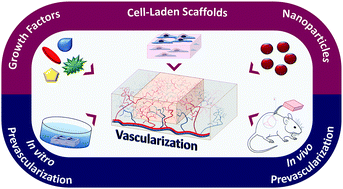Vascularization strategies for skin tissue engineering
Abstract
A number of challenges in skin grafting for wound healing have drawn researchers to focus on skin tissue engineering as an alternative solution. The core idea of tissue engineering is to use scaffolds, cells, and/or bioactive molecules to help the skin to properly recover from injuries. Over the past decades, the field has significantly evolved, developing various strategies to accelerate and improve skin regeneration. However, there are still several concerns that should be addressed. Among these limitations, vascularization is known as a critical challenge that needs thorough consideration. Delayed wound healing of large defects results in an insufficient vascular network and ultimately ischemia. Recent advances in the field of tissue engineering paved the way to improve vascularization of skin substitutes. Broadly, these solutions can be classified into two categories as (1) use of growth factors, reactive oxygen species-inducing nanoparticles, and stem cells to promote angiogenesis, and (2) in vitro or in vivo prevascularization of skin grafts. This review summarizes the state-of-the-art approaches, their limitations, and highlights the latest advances in therapeutic vascularization strategies for skin tissue engineering.



 Please wait while we load your content...
Please wait while we load your content...